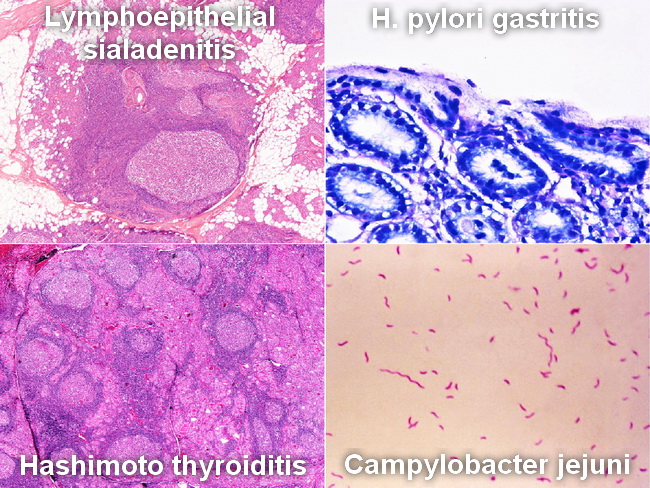MALT Lymphoma : Etiology


Comments:
MALT Lymphoma - Etiology: Extranodal marginal zone lymphomas usually arise in acquired mucosa-associated lymphoid tissue (MALT) in the setting of chronic inflammation of infectious, autoimmune, or unknown etiology. They begin as a polyclonal immune response to an antigen which eventually leads to the emergence of a B-cell clone. Following are some of the examples where the relationship between an antigen and MALT lymphoma is suspected or has been established: 1) Helicobacter pylori gastritis and gastric MALT lymphoma; 2) Campylobacter and Immunoproliferative Small Intestinal Disease; 3) Hashimoto thyroiditis and thyroid MALT lymphoma; 4) Lymphoepithelial sialadenitis (in the setting of Sjogren syndrome) and salivary gland MALT lymphoma; 5) Chlamydia psittaci and ocular adnexal MALT lymphoma; 6) Borrelia burgdorferi and cutaneous MALT lymphoma; and 7) Hepatitis C Virus and salivary gland or lacrimal gland MALT lymphoma. Image credits: H. pylori gastritis - @PatholWalker; Campylobacter - CDC, public domain.



